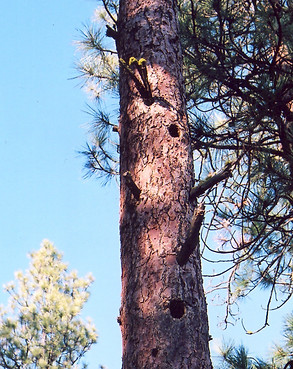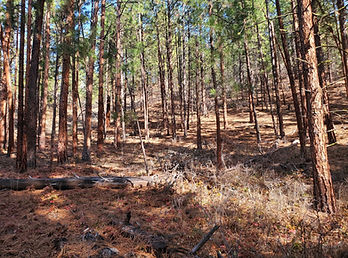Ponderosa Pine Forests
An often-overlooked gem
Up above the valley-bottom shrublands, the mountains of the Okanagan and Similkameen are covered in open Ponderosa Pine forests. This forest habitat is critical in supporting hundreds of different species of plants, animals, and insects. In addition to their beauty, these forests provide us with food, renewable timber, and places for recreation. It is important we treat our forests with respect to ensure these benefits can continue for years to come.

Nothern Pygmy Owl

Healthy Ponderosa Pine Forest

Mature Ponderosa Pine
Forest
Superpowers
Large trees like Ponderosa pines have extensive root systems which can prevent soil erosion and stabilize slopes
Forests suck up tonnes of CO2 and pollutants from the air each year and give us oxygen in return.
Ponderosa Pine tree bark contains vanillin, the compound found in vanilla flavouring. Smell the bark of a big Ponderosa on a hot day and you'll see!
More than 50 local wildlife species depend on Ponderosa Pine forests.

Lewis' Woodpecker
Look Up!
Nest cavities are excavated by woodpeckers (Fun Fact: While Lewis' Woodpeckers are woodpeckers by name, they are actually secondary cavity nesters and don't peck wood!). Mature trees are larger and allow for bigger nest cavities which can home a wider variety of secondary nesters like Flammulated Owls, Big Brown Bats, and even Flying Squirrels!
Ponderosa Pine trees can remain standing for 40 years after they die. Dead pines are important wildlife trees and should be left to stand if safe to do so.

White-headed Woodpecker
Hairy Woodpecker
Pileated Woodpecker
Northern Flicker
Northern Saw-whet Owl
Great Horned Owl
Flammulated Owl
Hoary Bat
Big Brown Bat
Silver Haired Bat
Mule Deer
Elk
California Bighorn Sheep
Yellow-pine Chipmunk
Clark's Nutcracker
Mountain Chickadee
Black-capped Chickadee
Brown Creeper
Pygmy Nuthatch
American Kestrel
Western Bluebird

Look down!
Ponderosa Pine forests are fire-maintained ecosystems. Regularly occuring fires help to reduce the build up of dead and dry pine needles on the forest floor.
In spring, keep your eyes open for bitterroot, a culturally significant plant and one of four food chiefs for Syilx ~ Okanagan people.
sp’itł’m - known as Chief Bitterroot- bitterroot is “the Chief for things under the ground.”
You can help!
-
Be sure to practice responsible recreation when enjoying the outdoors. Never leave a campfire unattended and avoid creating new tent sites, which destroys understory vegetation. Be sure to pack out every piece of garbage and always stay on trails when hiking, biking, and ATVing.
-
Try and help control the spread of invasive species. Check your boots, your pets, your clothes, and your gear before and after you go, removing any seeds or bits of vegetation and throwing them in the garbage. Invasive plants aggressively push native species out of the way and disrupt the natural balance between them, which affects the local wildlife that use the area.
-
If it's safe to do so, always keep dead standing trees. They can remain standing for up to 40 years and are critical in providing food and shelter for dozens and dozens of local wildlife species.
-
Reduce Fire Risk Wisely. While wildfire prevention is essential leaving some woody debris and trees for habitat is important for wildlife. Remove ladder fuels but leave some fallen logs and dead standing trees where it is safe to do so. Creating a defensible space around your home can improve fire safety without disrupting forest health.
-
Avoid activities that could lead to soil compaction or water contamination. Low-elevation forests help regulate water cycles. reducing runoff and supporting nearby riparian zones.
-
Address forest ingrowth (see images below). Over time without forest fires many small trees survive and begin to grow, eventually leading to very dense forests where little light reaches the forest floor and few other plants survive (right). Removing some of the smaller trees in a way that mimics natural spacing allows sunlight to reach the forest floor, benefiting diverse plant and animal species, while also reducing fuel for fires (left). A qualified Environmental professional and/or a forester can help with this.





